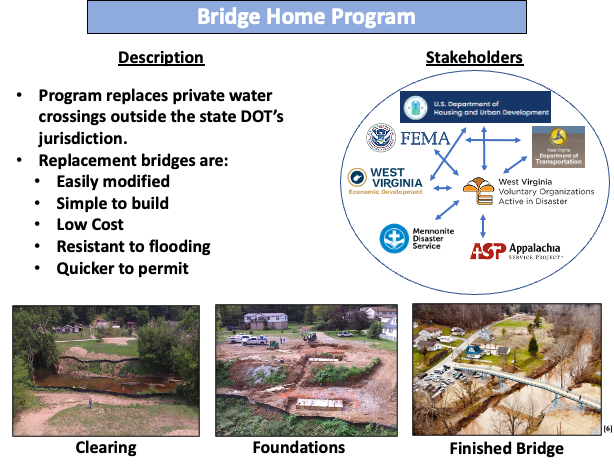Expecting More from Disaster Recovery: A Case Study of the 2016 Flood Events in West Virginia
Kase Poling, Virginia Tech
Click to view full poster (PDF format)
Communities have never been in greater need of resilient infrastructure, given both the historical and projected increases in the intensity and frequency of storm events. The recent flooding in Eastern Kentucky and devastation caused by Hurricane Ian across Florida and the Carolinas are but the latest in a long line of examples demonstrating this fact. These severe storm events cause devastation, but they also create the opportunity to construct new, more resilient communities. To better understand how to build more resilient communities, and the current barriers to this process, the post-disaster long-term recovery following the 2016 West Virginia floods was used as the focusing event. Stakeholders involved in the reconstruction of state-owned roadways and privately-owned bridges that enable local residents to cross small waterways to access their homes were interviewed. Interviews were coded using thematic content analysis. Project documents, such as government grants and permits, were used as an additional data source. Data analysis is ongoing. Results are grouped into three factors that influence post-disaster infrastructure design and construction, including (1) the relationships between stakeholders, (2) government regulations in the post-disaster recovery environment, and (3) stakeholders’ perceptions of risk. The poster and presentation will detail an introduction to the problem, the qualitative methods being used, preliminary findings, challenges in data collection about long-term disaster recovery, and recommendations to enable the future design and reconstruction of more resilient communities.
—Poster presented at ISI’s third annual Virtual Conference (November 16 – 17, 2022)




